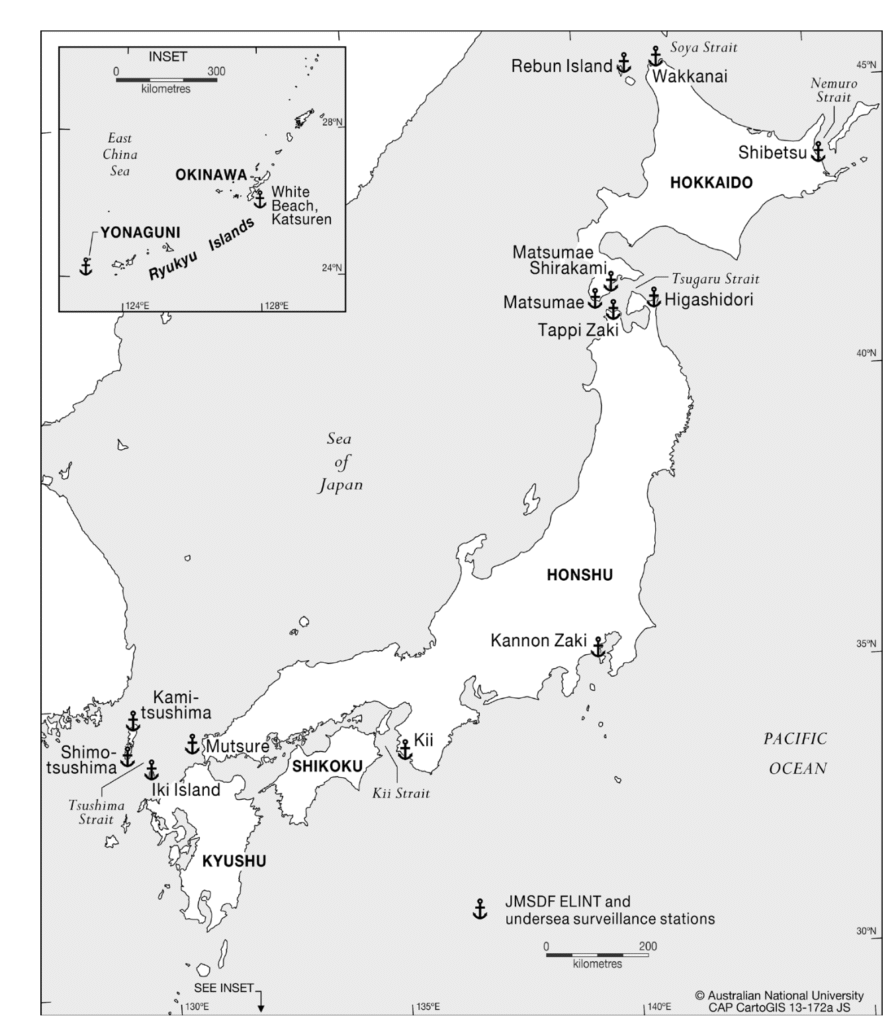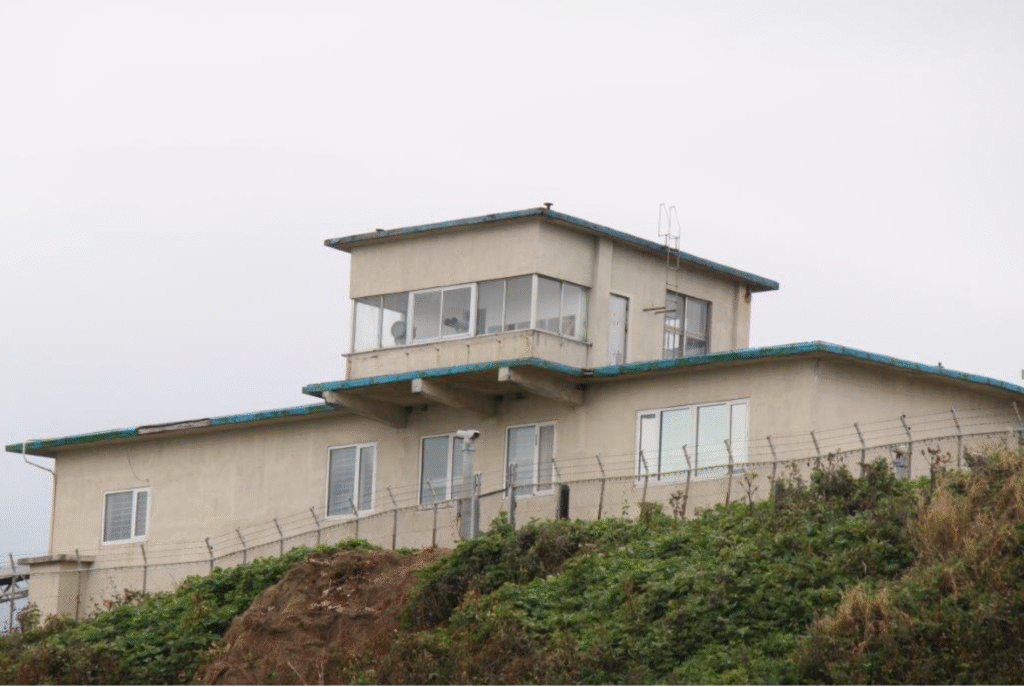Similar to seismic Japan and Russia have arrays of acoustic sensors to mainly detect submarines and other ocean traffic. Specifically there are arrays of interest in the Tsugaru Strait and one further out in the sea of japan. Details are limited as they are military but the Matsumae Coastal Defense Station.
Five LQO-3 arrays were installed in the Tsugaru Strait in the late 1960s and early 1970s.19 The first two, installed in 1967–68, were presumably located at Tappi Zaki and Shirakami, the narrowest part of the Strait. ‘All the buildings’ at both Shirakami and Tappi Zaki were completely renovated in the 1980s, and ‘the underwater microphones were also changed from the LQO-3s to new model LQO-4s’.20 Cables to the hydrophone arrays enter the sea at the Shintakano Bridge, about 3 kilometres west of the Shirakami station. The ELINT systems at Shirakami include antennas housed in a large hemispherical radome and in
The main Matsumae site is better placed for the landing point of a longer cable reaching out to the middle of the Sea of Japan and using the US-supplied deep-water, long-range hydrophone array and long cable installed in 1972. It is located above a 20-metre cliff, on the north-western side of the JMSDF’s harbour (see Plate 10). According to accounts by local fishermen, the Tsugaru cable-laying ship connected a long cable to the Matsumae station in 1972. They said that for ‘dozens of years’, two cables could be seen coming out of the cliff. During the 1970s, the area at the base of the cliff was covered by large concrete blocks to prevent storm damage, but the presence of four cables was reported by Hokkaido peace groups in the early 1980s. These reports also described a three-storey ‘observation/surveillance’ building, with a ‘secret underground room’, and recorded that at least 200 JMSDF personnel were stationed at the Matsumae base.
Map showing location of hydrophone recording stations. Matsumae, Tappi Zaki and Kami-tsushima locations would certainly have recorded the event.

It is almost certain KAL-007 hitting the ocean was a detectable event recorded at these sites. Whilst it is unlikely this data is accessible to the public

